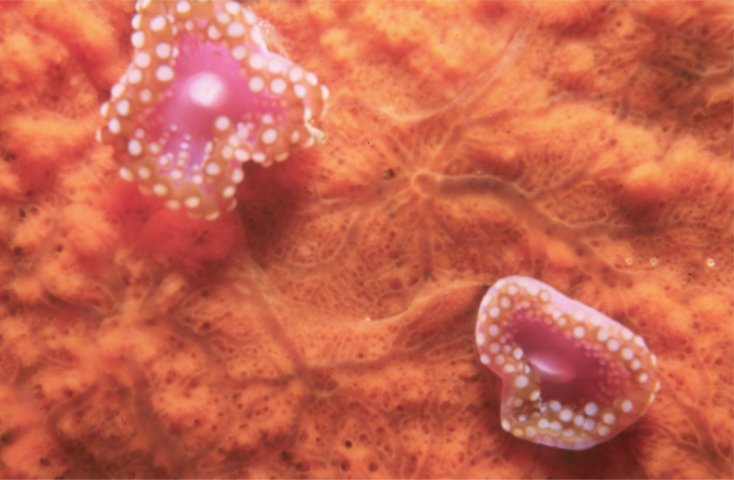
Photo copyright Tim Nicholson.
Corynactis viridis, Jewel Anemone
Taken with a macro lens off St Kilda, Scotland.
Jewel anemones occur in a spectacular array of colours that can all be seen on the same rock face. Their capacity for prolific asexual reproduction means that the different colours occur in distinct patches. The jewel anemones prefer fast flowing water and are often found with plumose anemones. A jewel anemone has around one hundred tentacles but in the photo the tentacles are retracted. The jewel anemone is up to 2.5 cm across and resembles a coral but lacks a skeleton.
Sea anemones feed on invertebrates. The prey is paralysed by nematocysts, caught by the tentacles and carried to the mouth in the centre of the tentacles. Water pressure inside the body maintains the anemone's shape and provides a base for muscle action. Reproduction may be sexual, where eggs are produced, or asexual, where adults split to produce dense colonies.
Further Reading
Great British Marine Animals, by Paul Naylor, Deltor (2011)
The Underwater Photographer: Digital and Traditional Techniques, by by Martin Edge, Paperback, 536 pages (2009)

